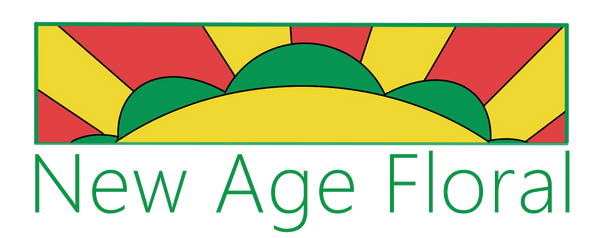Around the time the bumblebees make a first appearance in Spring, the leaves break out in a chartreuse chorus and synesthesia meets renewed energy and optimism with each lilac scented breath. Memories flood my thoughts, memories of childhood and playing in the dirt, forever exploring. I would get lost in the feel of the soil passing through my fingers and the same held true for sand, tiny pebbles, peas, and basically anything found in Nature. These natural things were the basis of many childhood masterpieces, long since washed away by the waves of time.

Hyacinth florets will dry very easily and keep their color better over time if left out of direct sunlight. Use them to decorate our accessory pinewood and bamboo leaf cones by adhering them with our plant based glue.
Now, as Spring’s chartreuse gives way to a deeper green, the Cicada’s call will signal Summer’s arrival and local cut flowers will fill every roadside stand and local Farmers Market. And lucky for us this display of Seasonality coincides with the many celebrations that take place during the growing season. Weddings are especially popular in the growing season and a major source of income for many florists.

Photo by @jackchauvelphoto Floristry by @krystasmithfloraldesign using @oshunpouch
So it should come as no surprise that florists really are intrepid explorers when it comes to sourcing the materials they will use to work their craft and it is just that process of selection which helps distinguish one florist from the other. How they use and organize these materials to create their work also define a florist. “I am a Sustainable Florist” is a phrase I’m hearing and seeing in my feed more and more, and while I may have a certain understanding of what that means, it may differ from what it might mean for someone else. We all have a different perspective but there does remain a Constant and that constant is Science.

Here I use OLMS Bamboo skewer/Cardholders to secure Agrawool grower plugs/design tubes and insert into a grower/design cube for a whimsical design to follow. One product with multiple applications.

As Sustainable Florists, sourcing your materials means making choices that will support a Circular Economy System. It’s a wonderfully simple process of designing out waste, keeping existing things in circulation through reuse for as long as possible, and targeting Regeneration through Composting. For me, the first step is to reject plastics, especially single use plastics. Afterall, virgin plastics production has increased since Covid and needs to be reined in. Plastics do not Regenerate. If your first step is to buy and use plastic things on the basis that they can be reused, it may surprise you to learn that your purchase (Demand) will trigger the increased production of that plastic thing (Supply); the opposite of your intention when it comes to sustainability. Indeed it can be challenging when considering just how powerful your choices are, and at the same time so very, very rewarding! Because when we design out waste -including plastics that come in the form of floral foam, cages, mesh, floral tape, “zip ties”, cardholders, etc., and replace them with sustainable alternatives, we make a huge step in the right direction.

And a world of possibilities opens up for sourcing materials that are all natural, can be reused (ideally for more than one type of application), and that can return to the Natural Environment or Home Compost. It is in the composting process under natural conditions where Regeneration takes place. What is produced in that process is known as beneficial compost or ‘black gold’, and is rich with nutrients and microorganisms that will replenish depleted soils. It’s a beautiful, healing thing!

Image by @willowbranchflowers
Finally, It goes without saying that Floral Foam, of all types, is harmful to the environment and can be cause for concern when it comes to our own health. Check out hashtags like #nofloralfoam and #sustainablefloristry to learn much more about the topic. Become a member of the Sustainable Floristry Network by going to www.sustainablefloristry.org . Consider their certified course on the fundamentals to get a solid Foundation of understanding.
And always prioritize using local seasonal flowers as much as possible to reduce the carbon footprint of imported flowers. Find out how easy that can be by going to www.slowflowers.com and join the Slow Flowers Society.
As I’ve always said, the most sustainable floral design is one crafted using local flowers simply drinking water directly from that treasured vessel you use every time you want to be surrounded by flowers.


Kirsten VanDijk CEO + Creative Director New Age Floral
Inventor of OSHUNPouch®️
